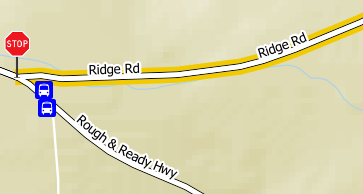I have two road layers - one is a subset of the other, so, there's a lot of overlap. When they are coincident, I see labels from both layers.

The 'lower' layer is the thin line road in the SW corner; the 'upper' layer is the thicker line road with black edges.
One of the 'Ridge Rd' labels is from the upper layer, one is from the lower layer. Ultimately I'd like to get rid of this resulting 'double label' effect.
Is there a way to suppress labels from the lower layer when it is coincident with an object from the upper layer? Is the best way to do this by keeping them on the same single layer and just do a rule-based or categorized style, to avoid this whole multi-layer issue? That would have other side-effects though I haven't explored the option yet.
Thanks in advance


